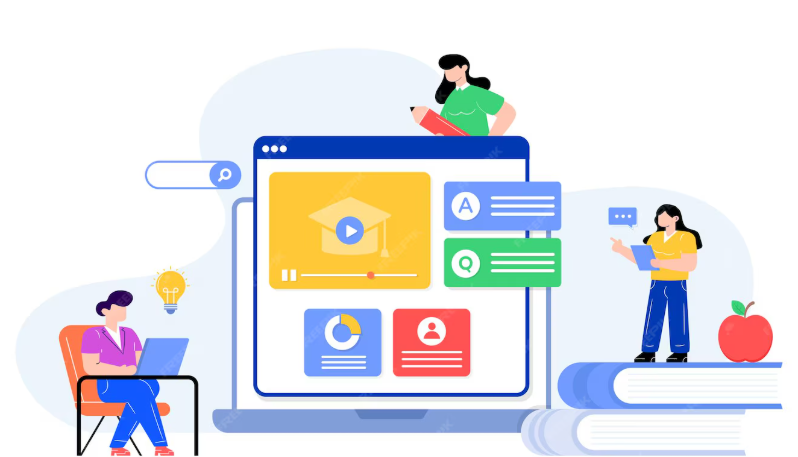More than simply subject-matter expertise is needed to create an online course that engages users—careful planning, organization, and material preparation are necessary. Whether you are an experienced instructor or a novice course developer, using a systematic method will assist guarantee that your course is understandable, interesting, and beneficial to your users.
Start with a Clear Course Idea
Any excellent course starts with a single, well-defined idea. Choose a subject that fits inside your area of expertise and solves a particular issue or need that your intended audience is experiencing. Consider the demand for your course topic and conduct some research on current market trends before you start creating content. To verify your proposal, you can use resources like surveys, social media polls, and Google Trends.
After you've focused your topic, make sure you understand the course objectives. What will pupils learn, you ask? What change are they going to go through? This will serve as the cornerstone of your course design.
Define Your Target Audience
Creating material that resonates with your users requires a thorough understanding of who they are. Take into account elements like their goals, pain areas, skill level, and demographics when defining your target audience. This will assist you in meeting their needs with the terminology, examples, and teaching style you use.
Make up fictionalized versions of your ideal users, or learner personas. This will direct the development of your content and guarantee that the lessons you teach your audience are applicable, useful, and relevant.
Outline Your Course Structure
Laying out your course structure comes next, after your idea has been proven to work. Segment your course into modules and then into lessons inside each module. Every lesson ought to concentrate on a single idea or ability, with a logical and obvious progression.
Start with a module that describes the learning objectives and establishes the mood. Then, to ensure a seamless learning process, proceed through your content in a way that builds upon each prior session. Users will stay more involved and find the course easier to follow if it has a well-organized structure.
Choose the Right Content Formats
Offering a range of content formats can improve the learning experience since different users absorb information in various ways. Mixing up written content, interactive exercises, quizzes, interactive videos, and downloaded resources can be a good idea. Videos are excellent for clarifying difficult ideas, whilst written content may be utilized as a reference and to reinforce important points.
Consider the platforms and technologies you'll need to deliver each kind of content. Make sure you have the right editing software and recording equipment for videos. To make written content easier to read and comprehend, utilize clear layout and design.
Create Engaging Content
Maintaining user motivation and involvement throughout the course depends on engagement. Every lesson should begin with an attention-grabbing hook, such as a fascinating fact, a thought-provoking query, or an actual event. To make abstract concepts relatable, use storytelling. To promote active engagement, include interactive components like discussion starters or quizzes.
Steer clear of needless jargon and use plain, conversational language instead. Using images, illustrations, and examples to break up long passages of text will make your material more readable and visually appealing.
Test and Revise Your Content
Testing your material with a small number of beta testers is crucial before going live. Get input on clarity, pacing, and engagement from a select group of people in your target audience. Their observations may assist you see places you might have overlooked for improvement.
Utilize this input to make your course better. To guarantee that everything goes smoothly and effectively supports the learning outcomes, make any necessary changes to the structure, content delivery, or supporting resources.
Prepare for a Successful Launch
Now that your content is prepared, you should concentrate on introducing your course. Formulate a marketing plan that generates excitement for your debut. To reach your target audience, use email advertising, social media promotions, and joint ventures with industry experts or influencers. Encouraging sign-ups might also involve providing free resources, additional stuff, or early-bird pricing.
Make sure your course platform is operational and user-friendly prior to launch day. Verify that all of the downloadable materials, videos, and links function properly.
More than just imparting knowledge is needed to create a successful online course; careful planning and preparation of the content are also necessary. You may create an engaging and educational learning environment by beginning with a clear idea, knowing your audience, organizing your course, and utilizing a variety of information types. Prior to launch, test and improve your course to help you iron out any kinks, and make sure your hard work reaches the right individuals with a carefully thought-out marketing approach. You can create a top-notch course that connects with your users and promotes long-term success by following these steps.





